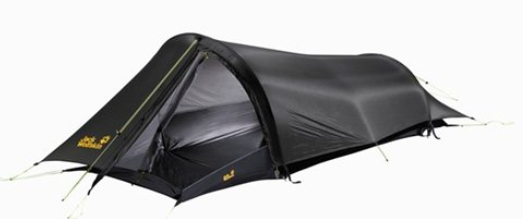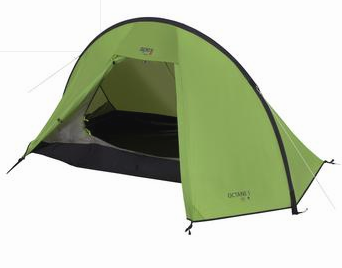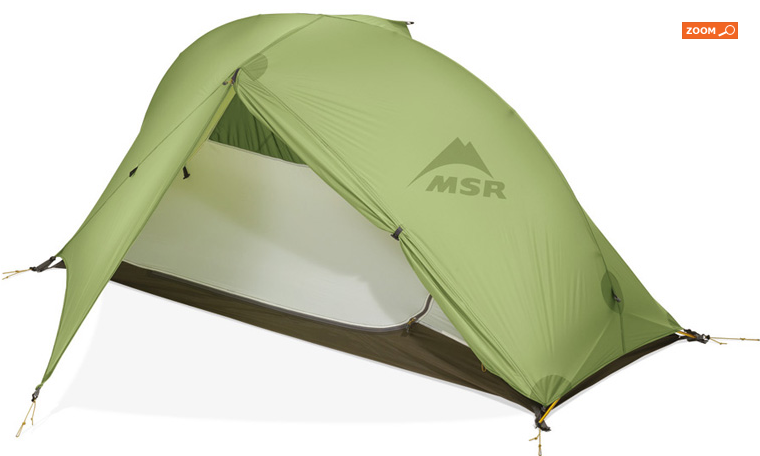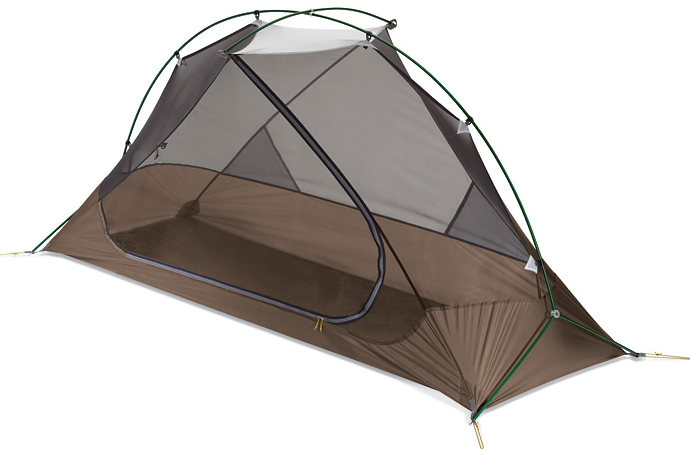One person tents – an engineering consideration
by Vinay Gupta • August 4, 2012 • Everything Else • 7 Comments
It all started when I saw the Jack Wolfskin Skylight. I’d greatly enjoyed the superlative Jack Wolfskin Weather Report Umbrella while it was available, and I sometimes pop my head into the store to see if they have come back.
The Skylight weighs 1200 grams and is impossibly tiny.
But let’s go back further, to Greece. In Greece, they have malaria. Malaria is a terrible disease, or perhaps family of diseases is a better description. Since the economic trouble there, malaria has come back, and many other horrible problems (HIV, drug resistant TB) are also sharply, terribly on the rise. I am afraid of malaria. I’m afraid of it because it’s just the kind of chronic withering disease to which I have fallen prey twice: chronic fatigue syndrome in my teens, and drug resistant walking pneumonia in my thirties. I’ve spent more than half of my life ill in some way or another. I am tasty to mosquitos etc, and I come out in itchy red bumps from minor bites, and I really don’t want to get malaria.
So I’m looking at this tent, and considering my upcoming trip to Greece. It pitches without the fly, so just the netting protects you. You can just set up somewhere and lie safe from the bugs, and this is good. But it’s £200, and I found myself thinking… goddamn that’s not a lot of living room and more specifically three things are problems.
- The seams aren’t taped, There’s a tube of goop you have to apply yourself to waterproof the critical seams, and I hate that job. I never feel like I’m doing it right. That’s generally a sign of a cheap tent, too, and this is not a cheap tent
- It’s not freestanding. That means that the tent-pegs are integral to the stability of the tent: it falls over if you take the tentpegs out. Dome tents aren’t like that, and (while they are heavier) it also means you can pitch them on concrete or gravel kinda-sorta or move them around if you have to. Freestanding tents are much less of a pain in the ass to use in less-than-ideal conditions because their structural performance degrades gracefully, a semi-ok pitch, vs. non-freestanding tents which either work or fall over depending on the quality of your tentpeg placement.
- It’s sodding tiny, so you can’t sit up in it, and that’s a problem because I love to meditate in tents (and hexayurts) and that means half-lotus position and a straight spine. If I’m going to be spending £200 on a tent, I need half-lotus, thank you.
Now, let me teach a little engineering. There’s a model in my head, of Christopher‘s ghetto car camping ways: he sleeps rough, nothing ever bites him, and he has the constitution of a horse, if not an ox. I know I get bitten to hell under those cirucmstances, and there’s a vanishingly small chance (maybe 1 in 100,000 or less) of me getting malaria when I’m in Greece because of that. It’s probably less than half that. And I think “gravel by the side of roads” and various kind of not-tentpeg-friendly car-associated surfaces, and now I’m beginning to write a specification in my head, a spec.
The tent I’m looking for should be
- a mesh inner tent, so it can screen from mosquitos etc. and other bugs without being suffocatingly hot. Should be possible to pitch mesh-only, without the flysheet.
- freestanding so it will tolerate bad pitch conditions
- possible to sit upright in for meditation
- as close to 1000g as possible, and tiny to boot
Now I think about my dreams. I want to travel more, to see some of this world before air travel becomes too expensive, while I’m young enough to be mobile and a little foolish, and while I have a little money. And I realize that you could pitch a tent of tha spec inside of borrowed corners of a friend’s house or a hotel room or on a concrete balcony and be safe from biting insects, and this makes me happy, because I do not get along very well with insects, being Scottish, as well as Indian. And now the spec has turned into thing of dreams, a possibility, a range extender.
It’s become something I must have, even though my plan for big travel is in trouble because of trouble getting paid for some work I did last year. And this may be a mistake, but it’s the hunger of engineering. And this is where the coincidence engine kicks in. The man I talk to about the Jack Wolfskin Skylight turns out to be a ShelterBox fundraiser in his spare time, he’s doing an event with them! He’s interested in humanitarian sheltering, and how’s that for a rarity in retail employees?! And so we’re talking about the hexayurt, and about my dreams of travel, and the years I spent on the road in America visiting my imagnary friends from the internet, and dreaming of home, and my very-dear-to-me two person Walrus tent that I bought on a freight train trip years ago because the tent that somebody else was supposed to have was too small, and there were, a, a common thread, mosquitos. But no malaria! And so one more link is forged, and who knows what conversations will come of it, and I leave the Jack Wolfskin store, thinking of the spec.
This is what it is to be an engineer-human. It’s a reflex response to the world, and it means many things.
So I go to the internet and do some research. There I discover three things.
- There are an enormous number of new technology tents which are dramatically lighter than I’m used to
- They range from reasonably priced to £600 or £700 quid
- They’re small and light enough to enable me to consider long backpacking trips in reasonable weather at 40 with a dodgy hip that may be rheumatoid arthritis
The tech might enable me to do what I could not do otherwise, and a little hope glimmers.
This is what it is to be an engineer. A machine changes who I am, and the right machine means a better me. All engineers are cyborgs.
So let’s run through some candidates.
Marmot Eos 1P £215 which is 1300 or 1400 grams, mostly mesh, freestanding and, critically, too small for me to sit up in because it narrows so quickly at the top that my head is wedged against the mesh. Beautiful piece of equipment, but fails the spec although it’s a much better candidate than the Jack Wolfskin Skylight, so now I’ve traded up. About the same money, more room, not much more weight, and critically a large vestibule (area inside the fly sheet but inside the tent body, as I had to explain to their staff!) which means your backpack stays dry.
The North Face Mica 1 £210 which has a clever asymetric pole arrangement and is freestanding with plenty of headroom, a large vestibule, light at 1500 or 1300 grams, and mesh on one door only, giving no cross-ventilation and more-or-less completely rending it unfit for use in hot climates if general tent performance is true in this case. Why do designers do this, even now, I don’t know. Well, I do, and we’ll discuss that in a minute, but moving swiftly on.
Black’s Apex Octane £60 down from £150 is almost identical in basic design philosophy to the Marmot Eos 1P but not freestanding. The same big hoop, the same big vestibule (even bigger in this case) but with 600 points to guy down to make it work. And almost certainly not enough room to sit up in, for the same reason, but I could not test this because Blacks couldn’t get enough space to put the tent up properly with the long guylines etc. At 1700g it’s a little heavier, but also a little larger. Probably a superb piece of equipment, and certainly a superb price. I felt like giving one as a gift, but had nobody in mind at that moment.
MSR Hubba £320 is brutally expensive, but 1300g, MSR and perfect except for one problem. In the UK,they sell the MSR Hubba HP which is the version of the Hubba without any bloody mesh, because we’re a cold climate camping environment. But I’m camping in Greece, and need the other one, and generally speaking prefer more ventilation and more clothes in tents. Nothing worse than a muggy tent! The MSR Hubba meets the spec and is mail-order for about £200, as well, which is probably how this will go.
Vango Helim 200 £250 which is another of these single hoop jobs, but the hoop runs in the other direction, cross the body of the tent, not down it. Tons of space, a two person tent at 1300g with superb use of tensile materials and ultra-light poles. Just, just talk enough to sit down in, I seriously considered this as the best designed tent I saw today, but it requires a ton of guy ropes and pegs to be stable, which is the price you pay for this kind of space-and-weight performance. A marvelous object. But not a lot of mesh, and therefore another day’s device. The chap in the store who showed me this tent was a physicist with a strong interest in designing outdoor equipment, and he may take on a hexayurt-related project with me. Such is the mystery of my occasional quests for objects: the hexayurt pervades the space, for both the Shelterbox contact and this one. Who’s to say how such coincidences factor into the wider picture of things, eh? There are many other tents of almost exactly this design too, but this is the lightest of them within this approximate price range.
Big Agnes Seedhouse SL1 about £200 online looks superb, hits the spec, and is 1100g stripped. Unfortunately nobody in London stocks them, and I can’t quite tell if I’d hit my head off the inside or not because there’s less than two inches in it as far as I can see. An absolutely superb piece of gear that I probably can’t buy because I can’t actually evaluate it.
There’s a ton of additional tents very close to these numbers. Hilleberg in one direction, and GoLite etc in the other. You can pay £100 less for a two person tent at 2500g or 3000g and that’s also a very good idea, but that weight difference is as much as my laptop weighs, and I don’t intend to take it camping, so… there’s a role for the “weighs as much as a full nalgene bottle” tent which a bigger, better, heavier tent simply does not fill.
What I realized was that I spent nearly two days thinking about this, and did not usefully write down what I had learned for other people, so that those searching for information on tents might be able to see an analysis from a slightly different direction, both the questions, but also the reasons for asking them, in one place, crosscutting across the technologies offered. Engineering.
Searching for conformity to The Spec is a huge part of what engineers do. Discovering the new spec is a designer’s question, in essence. When you combine these functions, with a sharp eye, good search terms and time, you can find almost anything in a Capitalist material paradise if you have the time to analyze and the money to spend.
Crap design survives because people without the time to do the analysis buy a brand name item on the basis of reading at most one or two competing reviews, and that’s the full extent of their winnowing of wheat from chaff.
I spent three years in the UK not carrying a pen-knife because I could not find one that I could carry without worrying about cutting myself because I’d gotten so used to US-style lockknives that I didn’t trust myself not to gash a finger unconsciously treating a folding knife as if it had a stable blade. I finally solved that problem but it stayed as an unsatisfactory open question for three years.
Lest this all seem like frippery, I carred the open spec which was unsatisfied until I invented the hexayurt for six years until I invented the solution, and I carred the open spec which became the hexayurt quad-dome for fifteen years until Edmund Harriss solved it. These are not trivial questions or processes, it’s this attention to detail and creative flux around creating and satisfying specifications which is the main creative engine of my working life.
I’m not just buying a tent, I’m learning what tents are so that I can decide on a good one and, perhaps, one day design something better. This is a practice, and it’s what we should teach young people if we want the next generation to build better things. You have to be an analyst to create effectively, particularly in a high tech world driven by discontinuous change in fundamental materials and manufacturing processes.
Try it yourself: break some question out into a spec and a search, and see how it changes your buying behavior.









7 Responses to One person tents – an engineering consideration